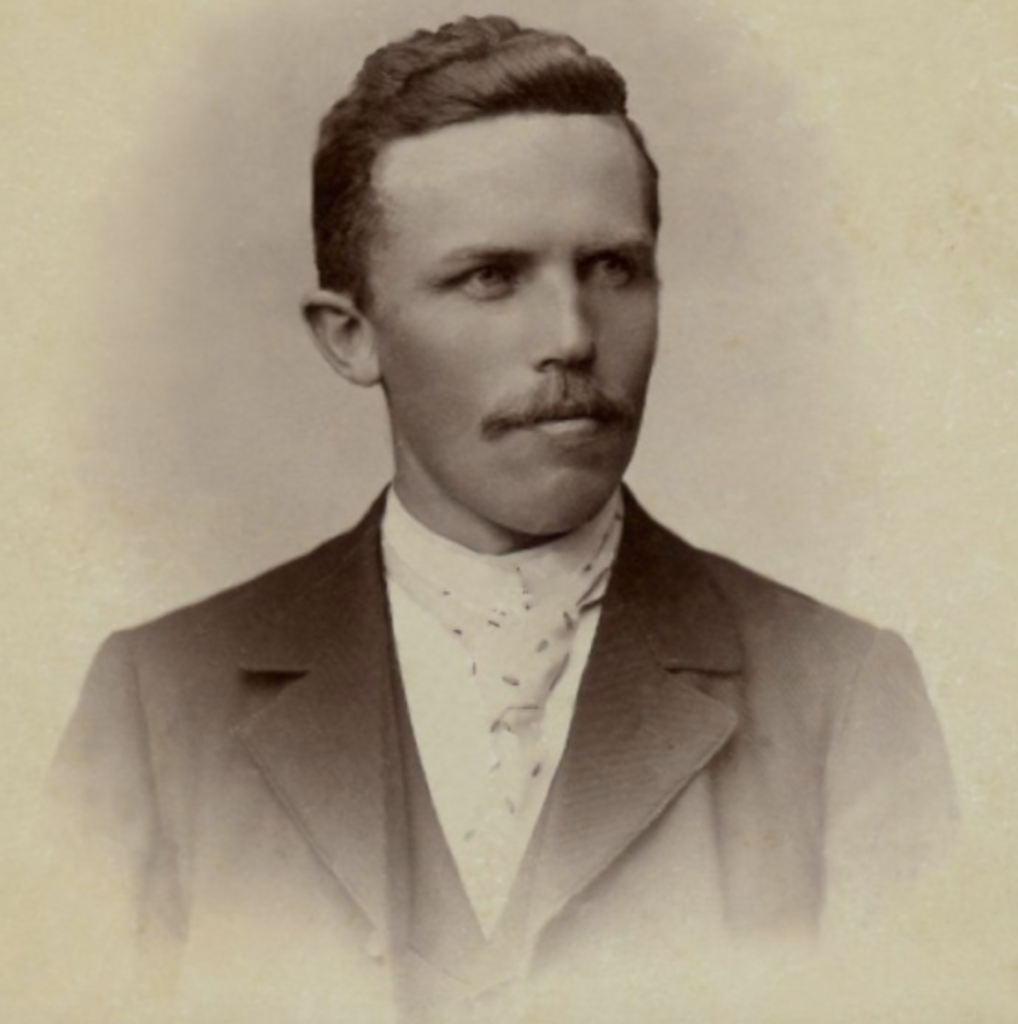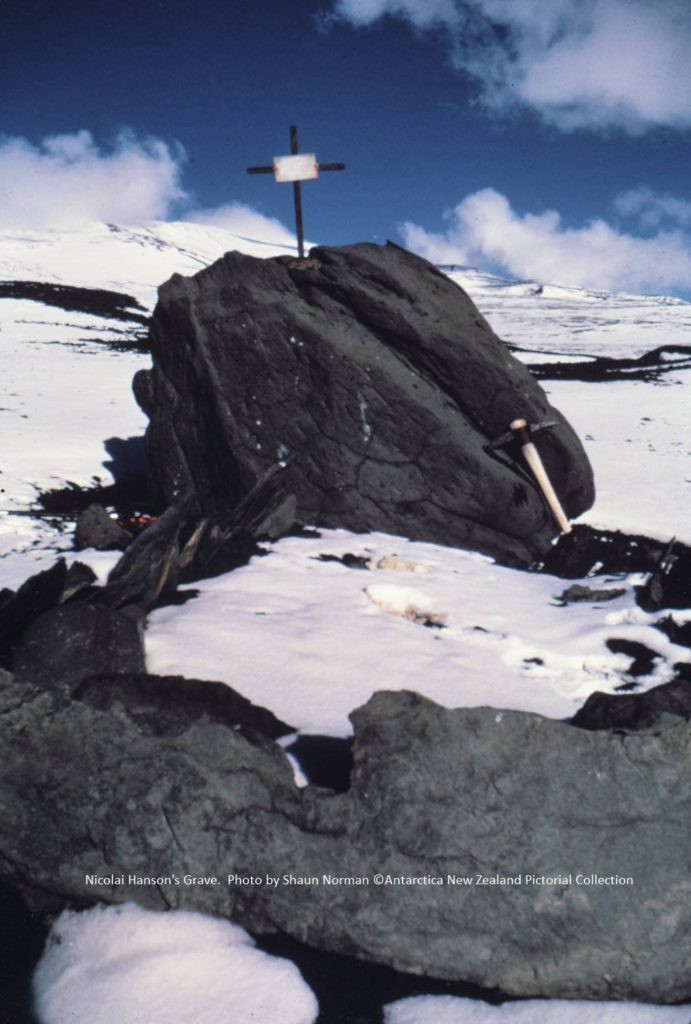
Accompanying Carsten Borchgrevink on his 1899 Southern Cross Expedition to Antarctica was Norwegian zoologist Nicolai Hanson (1870-1899).
The Southern Cross Expedition would be the first to spend considerable time in the Antarctic doing scientific research and the first to over-winter.
Hanson had been seriously ill during the voyage from England but he recovered enough to carry out some of his scientific work. Unfortunately, he had a relapse and died on 14 October 1899, apparently of an intestinal disorder. He was 28 years old and left a wife and a baby daughter, Johanne Hanson Vogt (1898–1999), who was born after he left on the expedition.
His dying wish was to be buried on the ridge above Ridley Beach so his fellow expeditioners built a coffin and carried it with difficulty up the 350 metres to the ridge. The ground was frozen so they used dynamite to dig what would be the first grave for the first human death in Antarctica.

When the expedition’s ship, ‘Southern Cross’, returned, a memorial service was held and a brass plaque and iron cross were attached to a boulder at the grave-site.
Bernacchi [the lone Australian on the expedition] wrote:
“There amidst profound silence and peace, there is nothing to disturb that eternal sleep except the flight of seabirds”
Members of the later Terra Nova Expedition (1910-1913) added to the grave-site by spelling Hanson’s name with white quartz pebbles.
Today, the route to the grave-site is blocked by an Adelie penguin colony, a protected area, but it can still be accessed by helicopter (if you have one :-)).
Mount Hanson, a small peak south of Cape Adare, and an Antarctic fish, Trematomus Nicolai, were named in Hanson’s honour and his grave is listed on the Antarctic Treaty’s list of historic sites and monuments in Antarctica.
A sad tale, but Antarctica is littered with the graves of brave and adventurous explorers who died in the pursuit of greater knowledge about our world.

